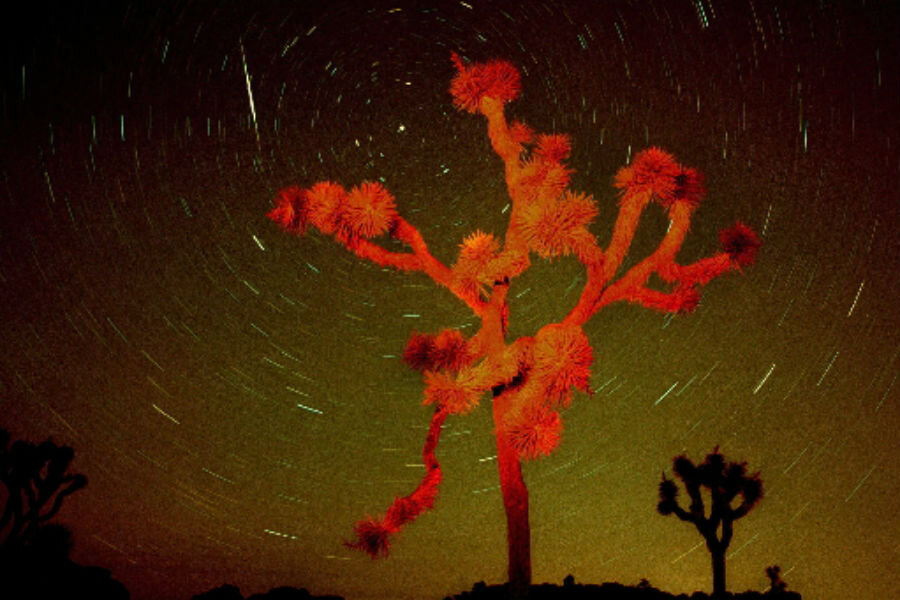How to watch the spectacular Leonid meteor shower tonight
Loading...
Following Monday’s supermoon, another huge meteorology event is occurring this week with the Leonid meteor shower, an annual event that has graced the sky with some of the most intense meteor storms in history.
The peak will occur on Thursday night and early Friday morning. It will continue streaking the sky until Nov. 21, with those living in the Northern Hemisphere enjoying the best views.
But because of lower frequency and a bright moon, the show this year may not be as impressive, NASA meteor expert Bill Cooke told Space.com.
"This year, the Leonids are not in outburst, so the rates are going to be about 10 to 15 per hour," Mr. Cooke said. Outbursts occur when Earth goes through a dense patch of meteors. "The Leonids are a very minor meteor shower until they outburst, or storm, and that's not projected to happen again until 2033."
Despite the lower visibility, the meteor shower will still be observable with the naked eye. But there will also be a free online broadcast of the event through the Slooh Community Observatory’s free webcast on Nov. 16, which will showcase a discussion of the event’s history and mythology.
The Leonid meteor shower comes from the constellation of Leo and occurs every November when Earth crosses through a trail of debris left by Comet Tempel-Tuttle.
The resistance in Earth’s atmosphere rubs against the comet’s crumbs, heating it up and creating burning balls of fire called meteors – the sparks that viewers see streaking across the sky. But the meteors tend to burn up entirely before hitting Earth’s surface, so there will not be any meteorites.
One of the biggest Leonid meteor storms decorated the sky in 1833, when more than 100,000 meteors were spotted an hour, according to EarthSky. Since the 19th century, skywatchers have been keeping an eye out for these storms every 33 years – the time the comet takes to complete a single orbit around the sun.
For the best view of the meteor shower, Cooke recommends having patience and looking for dark spots. Looking at the night sky later in November would help, too, when the moon’s brightness begins to wane. The dark hours before the dawn are when the greatest number of meteors usually fall.
"Go outside, find a dark sky, lie flat on your back and look straight up," he said, "and be prepared to spend a couple of hours outside."








